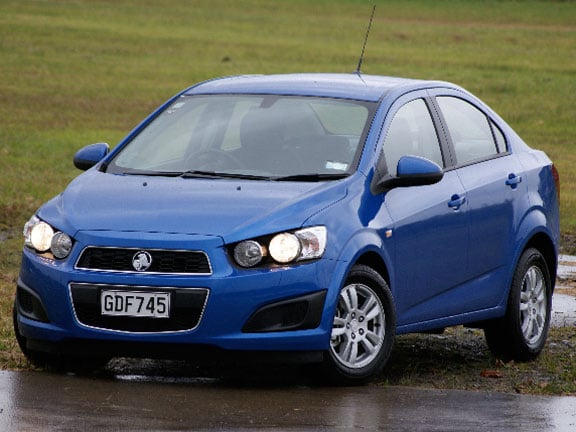
I think part of the reason for this is that the supermini segment (sometimes called ‘sub-B’, meaning half a size down on small cars) is really a creation of the European car industry. So most superminis are designed to either be sold in Europe or at least look like they should be. Europeans love anything with a hatchback and that’s where all the styling effort goes. With good reason I think; it’s a good format for this size of car.
Sadly, the Asian and American markets really like sedans. So once they’ve crafted a supermini hatchback, most companies feel compelled to knock off a three-box version as well. That’s usually what they look like, too: a knock-off. Many never reach New Zealand, but if you want a good example, consider the Suzuki SX4 sedan. It’s horrible-looking, as if somebody just grafted a boot onto an SX4 hatchback. Which is exactly what happened.
Anyway, stepping into this difficult genre is the Holden Barina sedan. The hatchback we’re familiar with, and really quite like. It has all kinds of contrived styling detail – influenced by motorcycle design, you know – but for $24,990, with a load of equipment and six-speed automatic gearbox, it’s really a neat little thing.
What of the new three-box version? Well, it’s no more expensive than the hatchback and gets an identical level of standard equipment: cruise control, Bluetooth, iPod connectivity and airbags everywhere (front/side/curtain). It looks good on paper.
On the eye? Not brilliant, but bad either. Holden talks about “painstaking design” in its press blurb and argues the styling is “not merely a stretched version of the hatch”. Well, let’s not get carried away. But the car does avoid the usual pitfall of the supermini-sedan by wearing different rear doors to the hatchback – an extravagant move by Korea, but a sure sign that there’s a big market for this car.
That bespoke sheet metal allows a rear profile that actually suits the sedan body shape, rather than having to awkwardly attach a boot to a passenger cell clearly designed to be part of a two-box design.
The sedan has the same 85kW 1.6-litre engine as the hatchback and the same six-cog automatic gearbox. The latter is a bragging point for Barina in the segment and rightly so. It’s smooth, quick-shifting and adds a lot of enjoyment to what is otherwise a fairly ordinary supermini in terms of dynamics.
The sedan is quieter than the hatchback, as is usual: the smaller cabin means less road-noise resonance. Technically, the three-box shape should also offer more body rigidity in hard cornering, but if you’re planning to drive a Barina at the limit you might have purchased the wrong car.
The odd thing about supermini sedans is that they have massive boots; something to do with the high deck and chunky profile that comes from being so closely related to a hatchback. When I say massive, I really do mean massive: the Barina’s is 502 litres, which is six more than a Commodore sedan. Strange but true.
Overall then, the Barina sedan makes a lot of sense, especially if you’re a fleet buyer wanting a small car with a big, secure boot to lock your stuff away in.
But give me the cheap and cheerful hatchback any day.